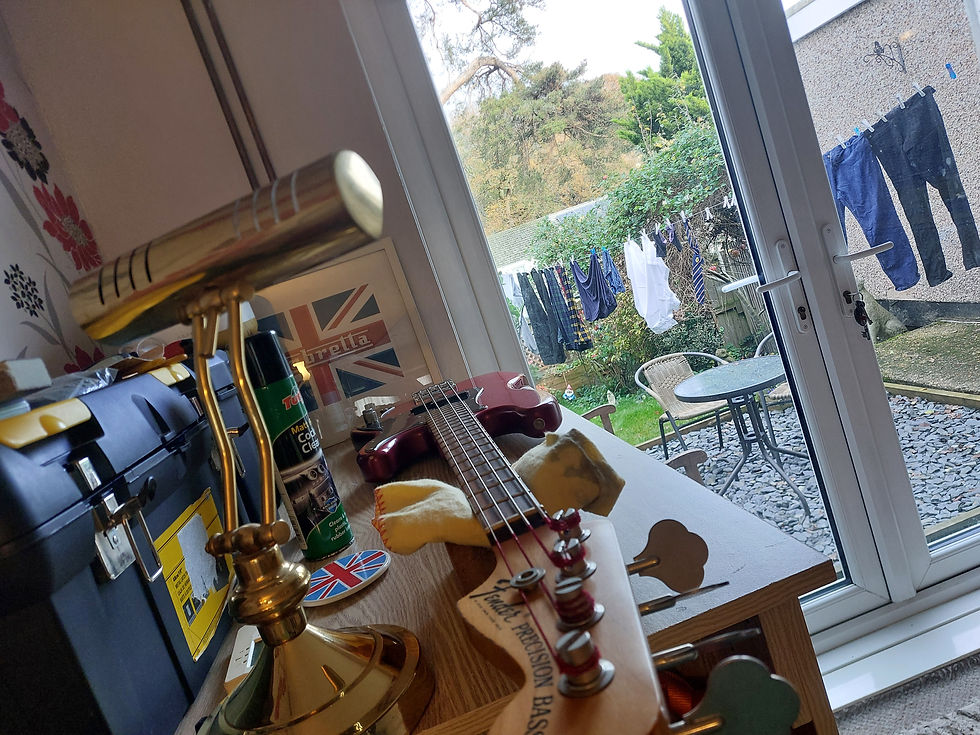BM CONCERT CLASSICAL ACOUSTIC GUITAR RESTRING SERVICE
- Ryan Pearce
- 5 days ago
- 3 min read

When a classical acoustic guitar starts to sound dull or feels harder to play, the strings are often the first place to check. Regular restringing is essential to keep your instrument sounding its best and playing smoothly. Recently, I performed a restring service on a BM Concert classical acoustic guitar for a client, and the transformation was remarkable. This experience highlights why regular restring services are crucial for every classical guitar owner.
Why Restringing Matters for Classical Guitars
Classical guitars use nylon strings, which behave differently from steel strings on other acoustic guitars. Nylon strings tend to lose their tone and tension faster, especially with frequent playing or changes in humidity and temperature. Over time, strings accumulate dirt, sweat, and oils from fingers, which dull the sound and can even damage the fretboard.
Key reasons to restring regularly:
Maintain sound quality: Old strings lose brightness and clarity, making your guitar sound flat or lifeless.
Improve playability: Fresh strings have better tension and feel smoother under the fingers, making it easier to play complex classical pieces.
Protect the guitar: Dirty or corroded strings can leave residue on the fretboard and bridge, potentially causing long-term damage.
Prevent string breakage: Regular replacement reduces the risk of strings snapping during practice or performance.
How Often Should You Restring Your Classical Guitar?
The frequency of restringing depends on how often you play and the environment where you keep your guitar. For a casual player, changing strings every 3 to 6 months is usually enough. For professionals or frequent players, restringing every 1 to 2 months keeps the instrument in top shape.
If you notice any of these signs, it’s time to restring:
The tone sounds dull or muted
Strings feel rough or sticky to the touch
Difficulty staying in tune
Visible discoloration or corrosion on the strings
The Restringing Process on a BM Concert Classical Guitar
The BM Concert classical acoustic guitar is known for its rich tone and comfortable playability. When restringing this guitar, I followed a careful process to ensure the best results:
Remove old strings carefully to avoid damaging the bridge or tuning pegs.
Clean the fretboard and bridge with a soft cloth and appropriate cleaner to remove dirt and oils.
Select high-quality nylon strings suited for classical guitars, balancing tension and tone.
Install new strings one at a time, winding them properly on the tuning pegs to ensure stable tuning.
Stretch the strings gently to help them settle and avoid frequent tuning adjustments.
Tune the guitar accurately and check intonation across the fretboard.
This method restored the BM Concert guitar’s bright, warm tone and improved its playability significantly.
Tips for Maintaining Your Strings Between Restrings
To extend the life of your strings and keep your guitar sounding great, follow these simple tips:
Wipe strings after each use with a clean, dry cloth to remove sweat and oils.
Store your guitar in a case to protect it from dust and humidity changes.
Avoid touching strings excessively with dirty or oily hands.
Use a string cleaner or lubricant occasionally to reduce corrosion.
Keep your guitar in a stable environment with moderate humidity (around 45-55%) to prevent string and wood damage.
When to Seek Professional Restring Services
While some guitarists prefer restringing their instruments themselves, professional restring services offer several advantages:
Expert handling reduces the risk of damage during string removal and installation.
Proper cleaning and setup can be done alongside restringing to improve overall guitar condition.
Correct string choice advice based on your playing style and guitar model.
Time-saving and convenience for busy musicians.
For example, the BM Concert classical guitar I worked on required careful attention to its bridge and tuning pegs, which a professional restring service handled efficiently.
Final Thoughts on Restringing Your Classical Guitar
Regular restringing is not just about replacing old strings; it is a key part of caring for your classical acoustic guitar. It keeps your instrument sounding clear, playing smoothly, and lasting longer. Whether you play daily or occasionally, paying attention to your strings and scheduling restring services will enhance your musical experience.




Comments